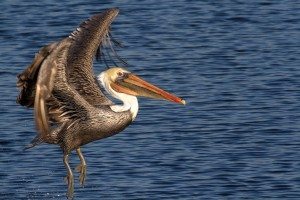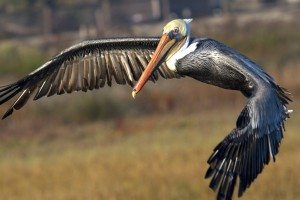A Win for Forage Fish, and the Birds that Eat Them
This post is reprinted from Audublog, the blog of Audubon California. GGBA’ incoming Executive Director Mike Lynes helped draft Audubon California’s comments to the California Fish and Game Commission on the importance of protecting forage fish — small species that are eaten by larger fish and other predators.
—————————–
Small fish are a big deal for seabirds like the Brown Pelican and the Black-footed Albatross. That is why Audubon California and other conservation groups are applauding the California Fish and Game Commission’s unanimous approval [in early November] of new policies governing the harvesting of small fish – such as anchovies, sardine, herring and squid – that are vital to the survival of birds and wildlife.
“Seabirds and other marine wildlife in California are safer today as a result of this new policy,” said Anna Weinstein, seabird program manager for Audubon California. “These small fish are the heartbeat of our coast and ocean, supporting our diverse array of seabirds and other marine wildlife.”
The policy comes at a critical time. Forage species have gone from 40 percent to 80 percent of total landings in commercial fisheries in California. Market squid is now the most lucrative commercial fishery in California, reflecting increasing global pressure on forage species as larger fish have declined or disappeared.

“Seabirds are especially sensitive to changes in prey abundance, and their populations have crashed and not recovered in areas where overfishing takes place,” added Weinstein. “Now, the state of California, which manages a substantial part of the range of many wide-ranging birds and wildlife, has gone far to ensure that in the future there will be sufficient prey for our marine wildlife.”
The policy prevents the expansion of existing fisheries or the initiation of new fisheries until more is known about the needs of predator species such as seabirds, sharks, tuna and sea otters, and that these needs can be explicitly included in fisheries management plans. Catch quotas on currently fished species such squid and herring will not increase without first ensuring enough is set aside for predators.

The policy puts similar conditions on the development of new fisheries on currently unfished species such as sand lance, an important prey item for California breeding seabirds like Common Murre, Tufted Puffin and Marbled Murrelet.
The policy adopted by the Commission was submitted by a working group comprised of fishing industry representatives and conservation groups, including Audubon California, Oceana, the Natural Resources Defense Council and Ocean Conservancy. The policy gained the support of a number of other fishing organizations that recognize the importance of a robust forage base to thriving stocks of salmon, sea bass, rockfish and tuna.
—————–
Stay on top of statewide bird and conservation news! Subscribe to Audublog, the blog of Audubon California. Or click here to receive Audubon California’s monthly e-newsletter.
